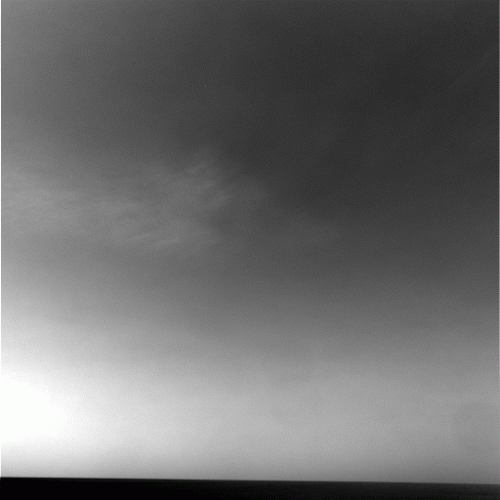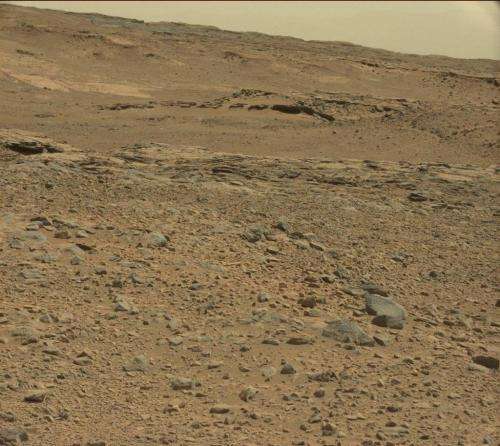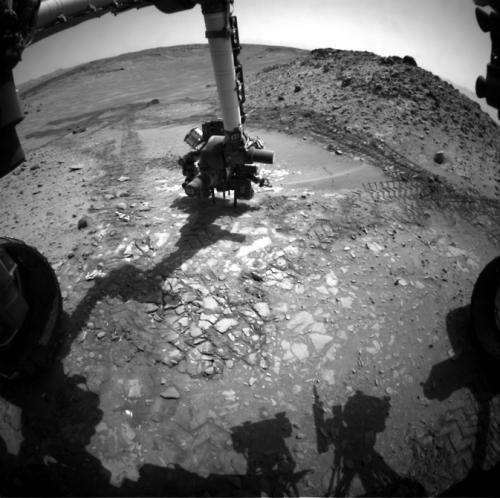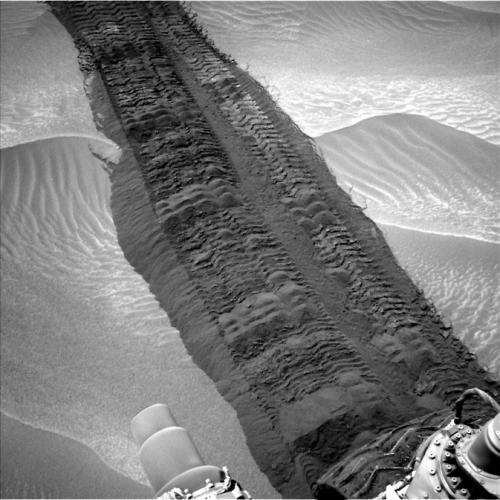Curiosity captures images of Martian clouds

Curiosity celebrated two years on Mars on August 5, 2014, and is continuing its progress across the surface of the planet. The rover has already fulfilled one of its primary mission goals by confirming that environments theoretically capable of supporting microbial life were once present on ancient Mars. Now Curiosity is continuing its journey toward the slopes of Mount Sharp and is currently headed for an outcrop dubbed 'Pahrump Hills.
In a tweet on September 2, 2014, Curiosity shared its view of the path ahead and proclaimed:
"Head for the hills! I'm driving towards these hills on Mars to do geology work & also search for clouds."
Curiosity is described as the first roving analytical laboratory on Mars, and has been cruising around the planet these past two years drilling rocks, zapping soil, and photographing layered outcrops. The geological data that the mission has returned has been invaluable for astrobiologists trying to interpret Mars' past climate conditions. But why is Curiosity also taking time to turn its instruments skyward?
Astrobiology Magazine spoke with Dr. Robert M. Haberle, Planetary Scientist at NASA Ames and a team member for the Rover Environmental Monitoring Station (REMS), and asked him why astrobiologists are curious about martian clouds.
"Clouds are part of the planet's climate system," explained Haberle. "Their behavior tells us about winds and temperatures."
Studying weather and clouds on Mars today can shed light on processes that have shaped the planet's climate through time.
"Some studies suggest that clouds in the past may have significantly warmed the planet through a greenhouse effect. A warmer environment is more conducive to life," said Haberle.

Clouds are also connected to wind and weather patterns, and studying weather is important for interpreting how natural processes have shaped the rocks, dunes and outcrops that Curiosity has been photographing.
Haberle points out that, "winds are the primary mechanism for shaping the planet's surface for the past 3-4 billion years.

Studying martian weather can not only help us understand Mars' current climate, but also provides clues about its past environment and the physical processes that operate on the planet. This information can in turn help astrobiologists interpret the planet's geological record.

REMS is an environmental monitoring station composed of six different sensors. The instrument collects daily and seasonal data on wind, pressure, relative humidity, temperature and ultraviolet radiation at the martian surface. REMS was contributed to the Mars Science Laboratory (MSL) mission by the the Centro de Astrobiologia (CAB) in Spain.
Source: Astrobio.net
This story is republished courtesy of NASA's Astrobiology Magazine. Explore the Earth and beyond at www.astrobio.net .





















